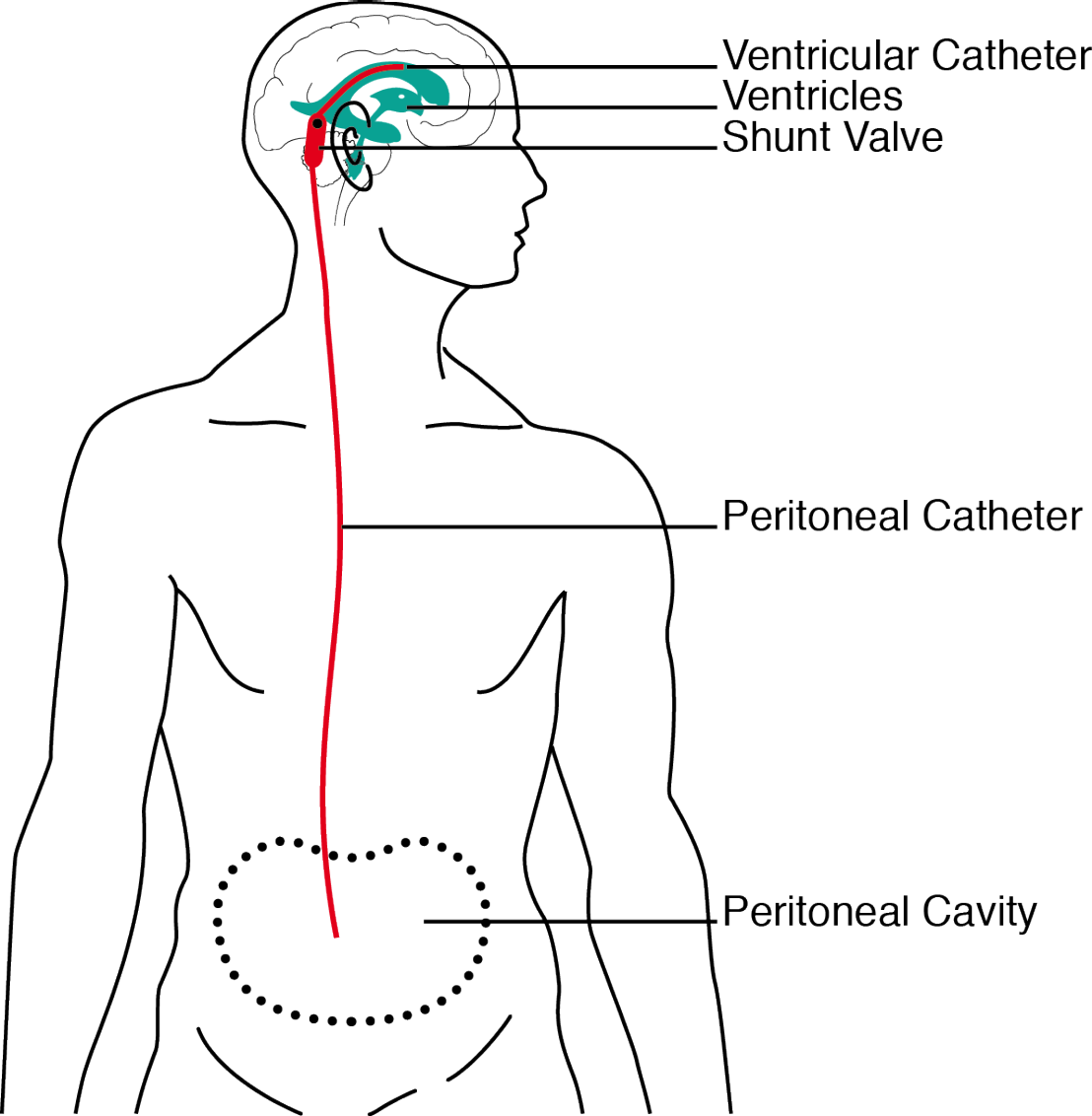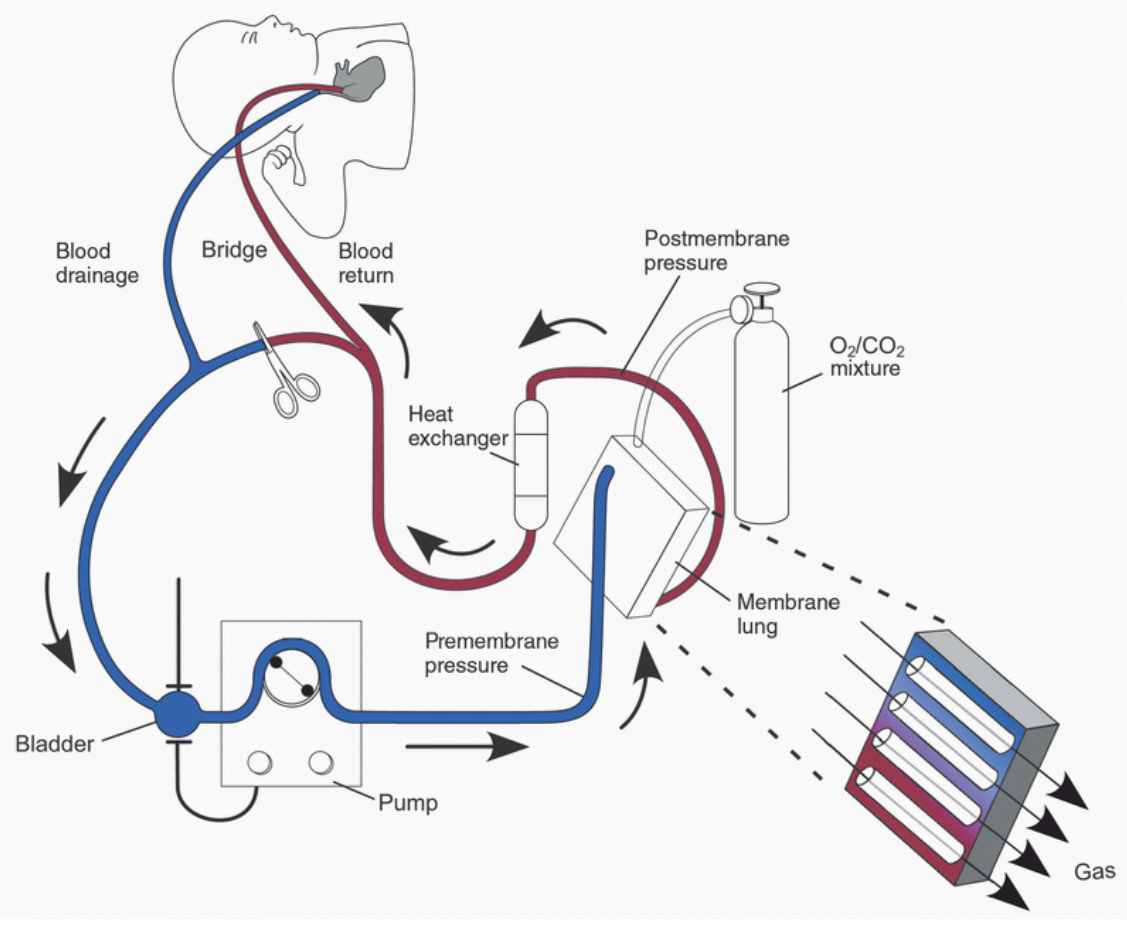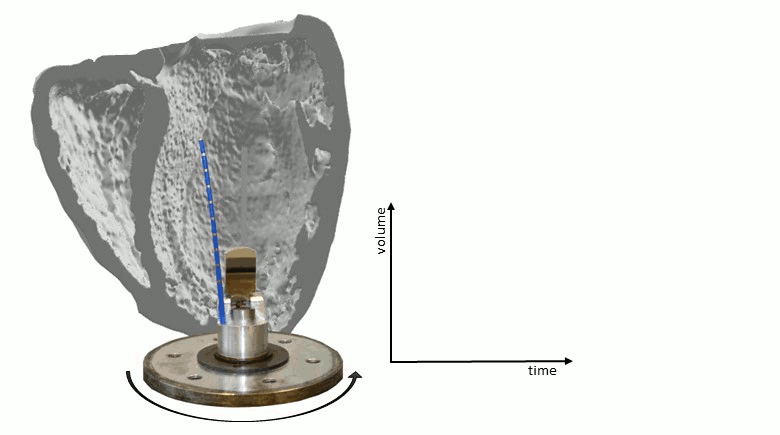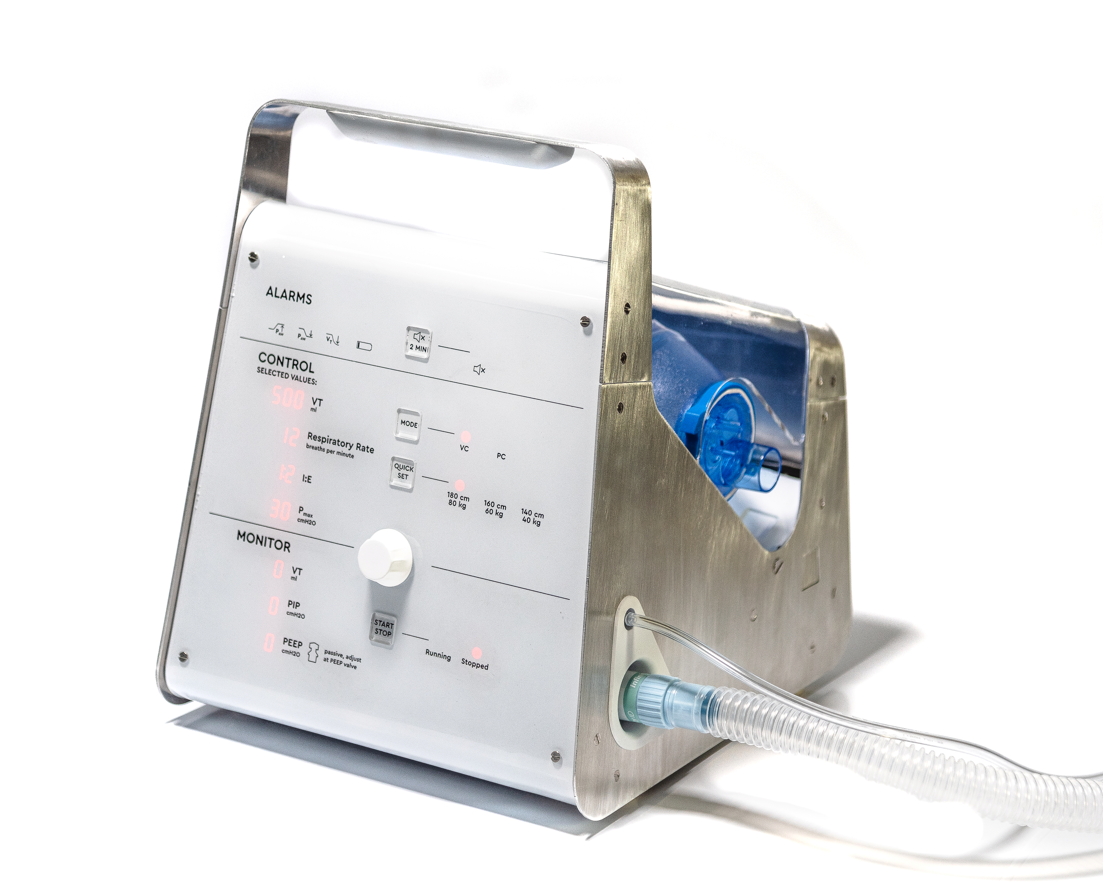Biomedical Applications

The human body is a complex system that contains many different control loops to maintain life. When one of these feedback loops is not functioning properly, medical devices are used to replace their functionality accordingly. In our research projects, we aim to model the nonlinear behavior of the human body, estimate appropriate parameters for the attending physician and by means of adaptive, safe controllers to ultimately improve the health of the patient.
VIEshunt: Toward a SmartShunt for Hydrocephalus

Hydrocephalus is a medical condition in which excessive accumulation of fluid in the brain causes neurological damage. Up to this date no treatment exists and the most common form of therapy still relies on passive mechanical shunt systems to drain the excessive fluid out of the brain into the abdominal area. The project VIEshunt is our commitment to leading hydrocephalus therapy into the 21st century by developing a ventricular intelligent electromechanical shunt system for hydrocephalus patients.
The aim of developing a novel improvement to traditional passive shunt based treatment of hydrocephalus brings together leading experts in the fields of neurosurgery, pathophysiology, and engineering from a variety of institutions. Togehter we are working toward a smart shunt system by approaching the development from three sides.
- Data-driven modelling of the cerebrospinal fluid dynamics. Much of the pathophysiology of hydrocepahlus is still unknown, however, a detailed quantitiative understanding of the dynamics underlying the disease is at the heart of improving patient healthcare. In order to do so we use modern machine learning and system identification techniques to explore extensive in-vivo data sets.
- Development intelligent hardware systems such as of mechatronic shunts and Hardware-in-the-Loop test-benches. Conventional shunts are basically simple passive mechanical valves, which are unable to perform physiologic control. We are therefore developing external page VIEshunt, a ventricular intelligent electromechanical shunt system for hydrocephalus patients. On the other side of the spectrum, sophisticated test benches are constructed for rapid control prototyping. This speeds up testing and development cycles, decreases costs and minimizes the need for animal trials.
- Design of safe learning-based control systems. Having developed quantitative models and mechatronic shunts enables the design of state estimators for the precise and accurate determination of the patient's health status. Moreover, acquired data and human feedback can be leveraged to adapt to the specific patient needs in order to optimize therapy.
Contact Person
Collaborators
Swiss Federal Institute of Technology: Product Development Group Zurich (pd|z)
University Hospital Zurich: external page Department of Neurosurgery
University of Zurich: external page Center for Surgical Research
Massachusetts Institute of Technology: external page Therapeutic Technology Design and Development (TTDD)
Funding
This project is funded by the external page Swiss National Science Foundation (SNF), the external page Swiss Innovation Agency (Innosuisse) and Download NCCR Automation.
MRI-conditional Extracorporeal Membrane Oxygenation
Congenital heart disease (CHD) describes one of the most common birth defects in humans with a prevalence of around 7.2 per 1’000 births in Europe. Around 7% of newborn with CHD require immediate open-heart surgery within the first 6 months of their life. During these surgical interventions, a cardiopulmonary bypass (CPB) is used to sustain circulation and oxygenation of the blood. However, the operating point of these CPBs has not yet been determined sufficiently in regards of minimizing irreversible brain damage during surgery. A promising approach to gain more insights into these dynamics would be to use magnetic resonance imaging (MRI) while the CPB is attached.

A lot of restrictions exist for devices to be used in an MRI environment, such as material constraints. Possible solutions for these issues were to use long blood tubes or long drive shafts. Using long blood tubes is not feasible with young children, since the drained blood volume would exceed the blood volume of their bodies. Long drive shafts on the other hand are very fragile and impractical. The project is approached with multiple steps:
- Different MRI-conditional heart lung machines are built and evaluated. Their hydraulic performance and hemolysis is assessed and compared with commercially available pumps.
- An extensive in-vivo study is conducted to observe cerebral perfusion dynamics during heart surgery.
- A modell is constructed from the gathered data to help understand the influence and correlation of CPB parameters and cerebral perfusion.
Contact Person
Collaborators
University Hospital of Zurich: external page Clinic of Cardiac Surgery
University Hospital of Zurich: external page Institute for Diagnostic and Interventional Radiology
University Animal Hospital of Zurich: external page Anesthesiology
University Animal Hospital of Zurich: external page Clinic of Diagnostic Imaging
University Animal Hospital of Zurich: external page Veterinary Clinical Pathology
Funding
This project is funded by the external page Swiss Innovation Agency (Innosuisse)
Physiological Adaptation of Ventricular Assist Devices
The Zurich Heart project is a multidisciplinary and inter-institutional cooperation between the University of Zurich (UZH), the University Hospital Zurich (USZ), the German Heart Center Berlin and ETH Zurich aimed at developing new technologies for left ventricular assist devices (LVADs). The Download Zurich Heart project was accepted as strategic project by Hochschulmedizin Zürich in 2012.

Currently, more than 23 million people worldwide suffer from heart failure. Mechanical circulatory support, i.e. an implantable mechanical pump, has proven a viable solution for such patients, especially given the shortage of donor hearts for transplants.
The existing technology is mainly based on continuous flow pump operating principles. One of the problems of current clinical LVADs is that they operate at a predefined speed, which is chosen by the physician, without being adapted to the physiological requirements. This lack of adaptation causes various problems, which affect the patient’s heart and circulation. For instance, ventricular suction due to high unloading can lead to myocardial damage. Low unloading can also cause under-perfusion, flow stagnation or even regurgitation and lung edema.

In order to solve these issues, our research concentrates on the following areas:
- Physiological control of LVADs
- Sensor development
- Suction detection and prevention
- Investigation of pulsatile LVAD operation
- Physiological control under bi-ventricular support
The above video shows a novel versatile hybrid mock circulation (vHMC) based on the hardware-in-the-loop concept. It is divided into a hardware part and a numerical model of the cardiovascular system. The implant is connected to the hydraulic interface and interacts in real time with the mimicked cardiovascular system. The vHMC enables dynamic testing of active implants, such as ventricular assist devices for left- or biventricular support, testing of total artificial hearts or of novel pump concepts. In addition, it supports testing of passive implants, like valves or grafts. Besides characterizing implants, new control approaches like physiological controllers that allow adjusting the pump flow to the perfusion demand of the patient can be tested.
The ventricular volume sensor project investigates physical principals, which allow the deduction of the ventricular volume of the human heart. A viable way is to use the reflection of ultrasonic waves at the myocardium to estimate the ventricular volume. Furthermore, we have observed the magnitude of the R-wave in the internal ECG signal to change with ventricular volume.
Contact Person
Collaborators
breathe: A Low-Cost Ventilator For All
breathe is a low-cost, high-tech mechanical ventilator designed for transport and emergency scenarios in low-and-middle-income countries. This low-cost, unconventional system design poses new challenges for control compared to state-of-the-art commercial ventilators.
The breathe platform serves as an ideal candidate for applied research in data-driven and first-priciples-based modelling and identification, state estimation, robust and adaptive control, model predictive control with safety guarantees, safe iterative learning control, and machine learning algorithms for time-series analysis and classification.
For more information about the project, check out the official Download breathe webpage.
Selected Publications
N. Tachatos, N. Steffen, M. Zander, N. Stankovic, M. Meboldt, T. Erb, J. Hammer, M. Schmid Daners, Download Testing of pandemic ventilators under early and agile development. Frontiers in Medical Technology, Volume 4, 2022.
L. Hewing, M. Menner, N. Tatchatos, M. Schmid Daners, C. du Pasquier, T. S. Lumpe, K. Shea, A. Carron, M. N. Zeilinger. external page Volume Control of Low-Cost Ventilator with Automatic Set-Point Adaptation. European Control Conference (ECC) 2021.
C. du Pasquier, L. Hewing, N. Steffen, T. S. Lumpe, N. Tatchatos, M. Menner, M. Schmid Daners, A. Carron, M. N. Zeilinger, K. Shea. external page Systematic Design, Control, and Parametric Testing of an Automated Resuscitator Bag Mechanical Ventilator. ASME. J. Mech. Des. 2021.
Contact Persons
Collaborators and Funding
Engineering Design and Computing Laboratory (EDAC)
University Hospital Zurich (USZ)
external page Zurich University of the Arts (Zhdk)
The breathe project is funded by the external page Swiss Innovation Agency (Innosuisse)

